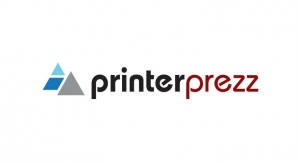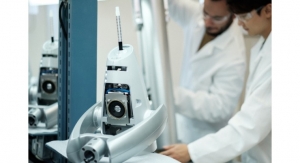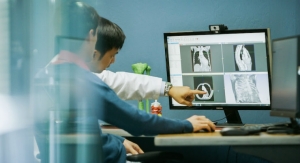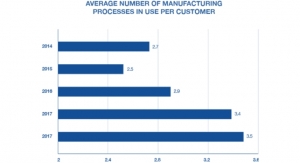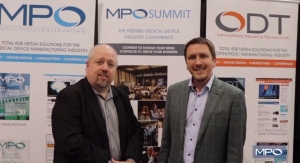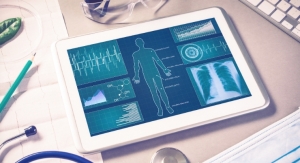Helin Räägel, Ph.D., Biocompatibility Expert, Nelson Labs10.08.19
Earlier this year, a final draft of the new ISO 14971: Medical devices— Application of risk management to medical devices came out for voting, and will soon be published as a revised document that will replace the current second edition of the document (ISO 14971:2007). This column will summarize the basic concepts of ISO 14971, highlight the main changes that were made to the document, and provide guidance on what to focus on when evaluating and documenting a medical device for its potential risks.
The intent of ISO 14971 is to provide a general “bird’s-eye view” approach to designing and implementing a risk management plan for medical devices, such as risks related to biocompatibility, data and systems security, electricity, moving parts, radiation, and usability. The scope of the document is to assist medical device manufacturers in identifying the hazards associated with their medical device, estimate and evaluate the associated risks, control these risks, and monitor the effectiveness of the controls through design, production, and post-production phases to ensure patient safety throughout the duration of a product lifecycle. Although it is mainly targeted toward the medical device field, the highlighted methods and evaluation points can be effectively applied to a wider array of products not necessarily categorized as medical devices, making it a useful guide for all manufacturers.
The first edition of ISO 14971 was released in 2000 to assist manufacturers, regulatory bodies, and healthcare providers with a framework to manage medical devices’ potential risks and provide a tool to actively improve the safety of medical devices. The second edition of ISO 14971 was developed and published in 2007 to address the need for additional guidance on the application of this standard and establish the relationship between hazards and hazardous situations that may arise during the use of a medical device. This third revision, due to be released soon, was developed with the intent of clarifying and describing in more detail some of the normative requirements such as risk management review and report, production, and post-production information that could and should be used for risk management and evaluation of overall residual risk—all essential to the risk management process.
The term manufacturer, and who qualifies as a manufacturer as defined in ISO 14971, was updated in the new revision to include more examples to better identify the target audience for the document. In short, if a company is manufacturing a medical device or an accessory used with a medical device, or is remanufacturing or modifying an already existing medical device, or changing the intended use of the medical device, that party is considered to be a manufacturer from the perspective of ISO 14971 and should follow the guidance provided within the document.
The main concepts for risk and risk management arise from the design and manufacture of a device, as well as from the intended use of that device. This means when evaluating for any risks associated with a given medical device, the circumstances of how it is made and how it is meant to be used become the most important aspects for risk evaluation. For instance, when a medical device is intended to be used on the surface of the skin (like an electro-conductive gel used for external muscle stimulation), the risks evaluated should only encompass the risks that are relevant to that specific intended use and not for a different application that is not clinically relevant.
That said, the new guidance emphasizes the aspect of reasonably foreseeable misuse that should be taken into consideration when evaluating risks for a medical device. A reasonably foreseeable misuse is defined as either an intentional or unintentional use of a product or system in a way not intended by the manufacturer, but can result from readily predictable human behavior. For instance, if a medical device is intended to be carried inside a pocket or a purse, the risks for patient harm from a biocompatibility perspective are pretty much nonexistent. However, if it is known or could be anticipated that the device could be placed (despite recommendations) into contact with bare skin (such as inside a bra like some women do with their phones), the risk for this contact may increase several fold, and should be evaluated accordingly.
When looking at the various risks for a given medical device and establishing the acceptance criteria for residual risks, you should always include a benefit-to-risk analysis that clearly outlines the pros and cons of using the device and identify the balance between the two opposing aspects. The new ISO 14971 emphasizes identifying the benefit a given medical device will bring. A benefit is defined in ISO documents as a positive impact or desirable outcome from the use of a medical device on the health of an individual, or a positive impact on patient management or public health. To identify the risks, the manufacturers are encouraged to think about all the characteristics that could affect the safety of their medical device and relate those back to the operating principle, intended use, and any reasonably foreseeable misuse of that given device. This systematic review can assist in identifying possible hazards and hazardous situations, and help in building effective risk management plans. Annex C of the document (former Annex D and F) provides a non-exhaustive list of possible hazards that can be associated with different medical devices, and provides a platform to start the evaluation of a new device or process.
When talking about managing risk, another responsibility highlighted in the standard is that a manufacturer has to meet both pre-market and post-market requirements, such as adverse event reporting and notification of corrective actions. This data should be implemented in the risk management plan and the overall evaluation process. The new guidance provides examples of how to set up and implement risk control measures into the production and lifecycle of the medical device. It also highlights the effective use of design and process verifications that could serve as verification for the effectiveness of the risk control measures in the upfront manufacturing process. For example, a design verification process could establish the effectiveness of certain performance criteria on the device to minimize the risks down the line. In the new revision, a bigger push was made to emphasize the importance of using relevant data from post-market information and activities that could assist in reducing risks for the medical device. It is also mentioned that during the lifecycle of the product, valuable information could be received from various sources. Such information could come from the production process itself or through monitoring of the manufacturing process; it could be information generated during the installation, use and maintenance of the device, user information, or publicly available information. This data could even come from the supply chain and the so-called generally acknowledged state-of-the-art information. The information related to the generally acknowledged state-of-the-art can include new or revised standards, published validated data specific to the application of the medical device under consideration, the availability of alternative medical devices or therapies, and other information.
It should also be mentioned that a companion document, ISO/TR 24971: Medical devices – Guidance on the application of ISO 14971 is also undergoing a revision to include the changes and updates associated with the revision of ISO 14971. ISO/TR 24971 is intended to provide more specific guidance to assist in the development, implementation, and maintenance of risk management for medical devices that aim to meet the requirements of ISO 14971. During the updating process, some of the informative Annexes that were previously included in the ISO 14971 were moved to ISO/TR 24971, including previous Annex D – Risk concepts applied to medical devices (risk severity evaluation), previous Annex G – Information on risk management techniques (risk management techniques), and previous Annex H – Guidance on risk management for in-vitro diagnostic medical devices.
Overall, the main purpose of ISO 14971 is to provide a framework to develop and implement a risk management program for a medical device, or any device for that matter, that could be used by people. It highlights the need to use a risk-based approach to evaluate the potential risks for their actual clinical hazards, and guides the user of the standard through a thought process that, in the end, is intended to make the devices we use safer for the end-user.
Dr. Helin Räägel is an expert in biocompatibility, especially with respect to the relationship between medical device materials, biological systems, and the analytical procedures used to evaluate biocompatibility in-vitro and in vivo. She has over 10 years of experience in scientific research, over two years of medical device experience managing validation work for regulatory acceptance, and is currently working as a biocompatibility expert in the technical consulting group at Nelson Labs, giving guidance and recommendations for biocompatibility assessments targeted for regulatory submissions all over the world. Dr. Räägel received her Ph.D. in molecular cell biology, with research focusing on cell migration, polarity, and targeted delivery of bioactive therapeutics. Her postdoctoral research project aimed at discovering the molecular mechanisms behind organ development and structural assembly using in-vitro techniques and animal models. Her successful academic career was rewarded by an Alexander von Humboldt Fellowship in Germany and later by a Marie Curie Fellowship—research awards competitive on a global scale.
The intent of ISO 14971 is to provide a general “bird’s-eye view” approach to designing and implementing a risk management plan for medical devices, such as risks related to biocompatibility, data and systems security, electricity, moving parts, radiation, and usability. The scope of the document is to assist medical device manufacturers in identifying the hazards associated with their medical device, estimate and evaluate the associated risks, control these risks, and monitor the effectiveness of the controls through design, production, and post-production phases to ensure patient safety throughout the duration of a product lifecycle. Although it is mainly targeted toward the medical device field, the highlighted methods and evaluation points can be effectively applied to a wider array of products not necessarily categorized as medical devices, making it a useful guide for all manufacturers.
The first edition of ISO 14971 was released in 2000 to assist manufacturers, regulatory bodies, and healthcare providers with a framework to manage medical devices’ potential risks and provide a tool to actively improve the safety of medical devices. The second edition of ISO 14971 was developed and published in 2007 to address the need for additional guidance on the application of this standard and establish the relationship between hazards and hazardous situations that may arise during the use of a medical device. This third revision, due to be released soon, was developed with the intent of clarifying and describing in more detail some of the normative requirements such as risk management review and report, production, and post-production information that could and should be used for risk management and evaluation of overall residual risk—all essential to the risk management process.
The term manufacturer, and who qualifies as a manufacturer as defined in ISO 14971, was updated in the new revision to include more examples to better identify the target audience for the document. In short, if a company is manufacturing a medical device or an accessory used with a medical device, or is remanufacturing or modifying an already existing medical device, or changing the intended use of the medical device, that party is considered to be a manufacturer from the perspective of ISO 14971 and should follow the guidance provided within the document.
The main concepts for risk and risk management arise from the design and manufacture of a device, as well as from the intended use of that device. This means when evaluating for any risks associated with a given medical device, the circumstances of how it is made and how it is meant to be used become the most important aspects for risk evaluation. For instance, when a medical device is intended to be used on the surface of the skin (like an electro-conductive gel used for external muscle stimulation), the risks evaluated should only encompass the risks that are relevant to that specific intended use and not for a different application that is not clinically relevant.
That said, the new guidance emphasizes the aspect of reasonably foreseeable misuse that should be taken into consideration when evaluating risks for a medical device. A reasonably foreseeable misuse is defined as either an intentional or unintentional use of a product or system in a way not intended by the manufacturer, but can result from readily predictable human behavior. For instance, if a medical device is intended to be carried inside a pocket or a purse, the risks for patient harm from a biocompatibility perspective are pretty much nonexistent. However, if it is known or could be anticipated that the device could be placed (despite recommendations) into contact with bare skin (such as inside a bra like some women do with their phones), the risk for this contact may increase several fold, and should be evaluated accordingly.
When looking at the various risks for a given medical device and establishing the acceptance criteria for residual risks, you should always include a benefit-to-risk analysis that clearly outlines the pros and cons of using the device and identify the balance between the two opposing aspects. The new ISO 14971 emphasizes identifying the benefit a given medical device will bring. A benefit is defined in ISO documents as a positive impact or desirable outcome from the use of a medical device on the health of an individual, or a positive impact on patient management or public health. To identify the risks, the manufacturers are encouraged to think about all the characteristics that could affect the safety of their medical device and relate those back to the operating principle, intended use, and any reasonably foreseeable misuse of that given device. This systematic review can assist in identifying possible hazards and hazardous situations, and help in building effective risk management plans. Annex C of the document (former Annex D and F) provides a non-exhaustive list of possible hazards that can be associated with different medical devices, and provides a platform to start the evaluation of a new device or process.
When talking about managing risk, another responsibility highlighted in the standard is that a manufacturer has to meet both pre-market and post-market requirements, such as adverse event reporting and notification of corrective actions. This data should be implemented in the risk management plan and the overall evaluation process. The new guidance provides examples of how to set up and implement risk control measures into the production and lifecycle of the medical device. It also highlights the effective use of design and process verifications that could serve as verification for the effectiveness of the risk control measures in the upfront manufacturing process. For example, a design verification process could establish the effectiveness of certain performance criteria on the device to minimize the risks down the line. In the new revision, a bigger push was made to emphasize the importance of using relevant data from post-market information and activities that could assist in reducing risks for the medical device. It is also mentioned that during the lifecycle of the product, valuable information could be received from various sources. Such information could come from the production process itself or through monitoring of the manufacturing process; it could be information generated during the installation, use and maintenance of the device, user information, or publicly available information. This data could even come from the supply chain and the so-called generally acknowledged state-of-the-art information. The information related to the generally acknowledged state-of-the-art can include new or revised standards, published validated data specific to the application of the medical device under consideration, the availability of alternative medical devices or therapies, and other information.
It should also be mentioned that a companion document, ISO/TR 24971: Medical devices – Guidance on the application of ISO 14971 is also undergoing a revision to include the changes and updates associated with the revision of ISO 14971. ISO/TR 24971 is intended to provide more specific guidance to assist in the development, implementation, and maintenance of risk management for medical devices that aim to meet the requirements of ISO 14971. During the updating process, some of the informative Annexes that were previously included in the ISO 14971 were moved to ISO/TR 24971, including previous Annex D – Risk concepts applied to medical devices (risk severity evaluation), previous Annex G – Information on risk management techniques (risk management techniques), and previous Annex H – Guidance on risk management for in-vitro diagnostic medical devices.
Overall, the main purpose of ISO 14971 is to provide a framework to develop and implement a risk management program for a medical device, or any device for that matter, that could be used by people. It highlights the need to use a risk-based approach to evaluate the potential risks for their actual clinical hazards, and guides the user of the standard through a thought process that, in the end, is intended to make the devices we use safer for the end-user.
Dr. Helin Räägel is an expert in biocompatibility, especially with respect to the relationship between medical device materials, biological systems, and the analytical procedures used to evaluate biocompatibility in-vitro and in vivo. She has over 10 years of experience in scientific research, over two years of medical device experience managing validation work for regulatory acceptance, and is currently working as a biocompatibility expert in the technical consulting group at Nelson Labs, giving guidance and recommendations for biocompatibility assessments targeted for regulatory submissions all over the world. Dr. Räägel received her Ph.D. in molecular cell biology, with research focusing on cell migration, polarity, and targeted delivery of bioactive therapeutics. Her postdoctoral research project aimed at discovering the molecular mechanisms behind organ development and structural assembly using in-vitro techniques and animal models. Her successful academic career was rewarded by an Alexander von Humboldt Fellowship in Germany and later by a Marie Curie Fellowship—research awards competitive on a global scale.



